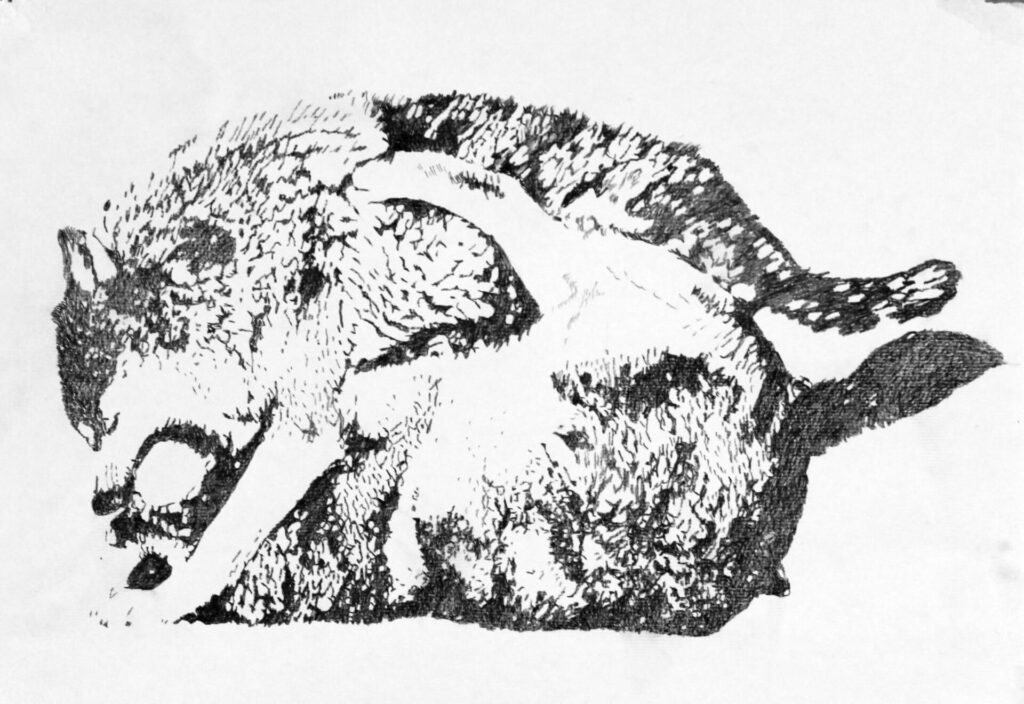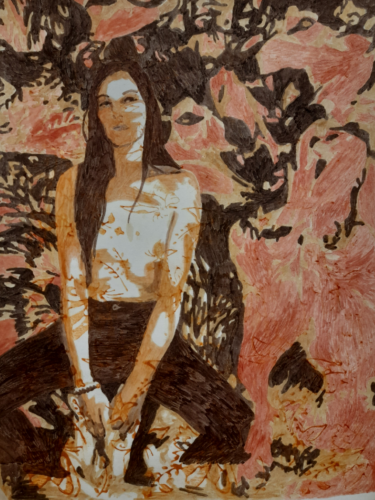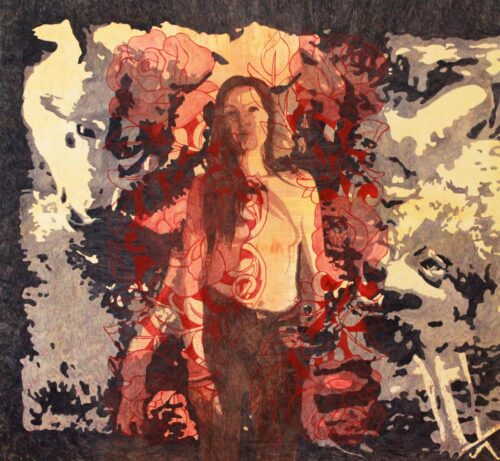
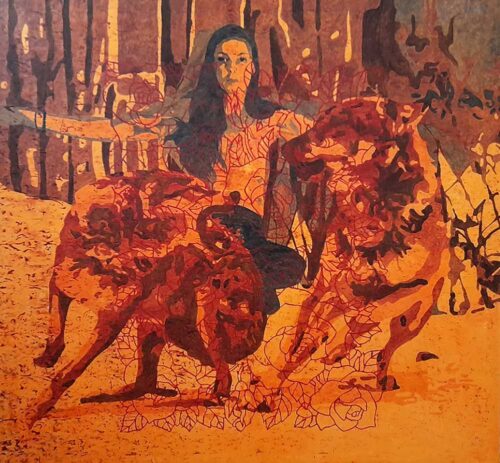
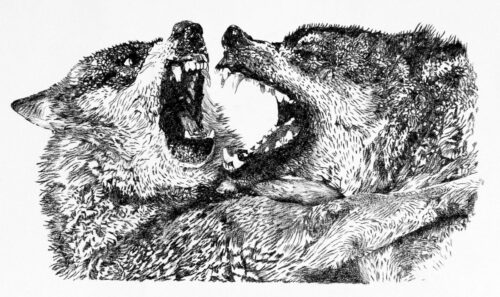
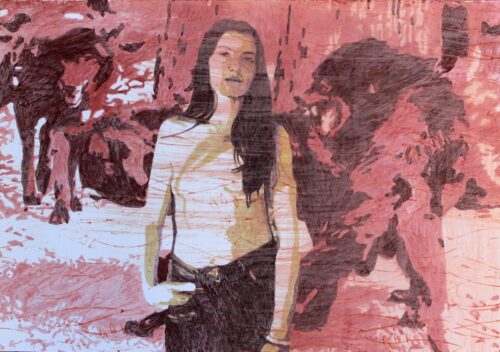
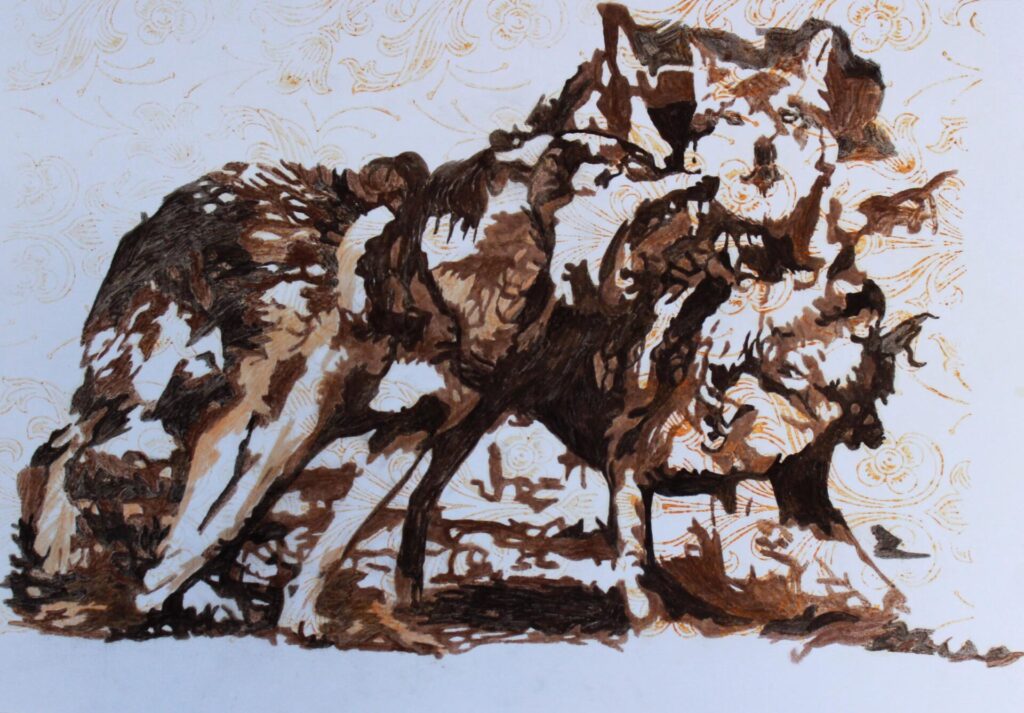
Series “Me and the wolves”
The wolf is an impressive animal.
In the pictures “me and the Wolves” I thematise the right to exist par excellence, I am interested in creating an idea in which the image of man and above all my own self-image takes shape. The wolves in my pictures become a projection surface for my own desires! In the pictures, the wolf stands for self-knowledge, self-reflection, growth and strength. The wolf symbolises a primal force. The focus is on our own needs and desires.
When we humans observe nature and animals, we always see ourselves and the way we interpret the world.
The wolf impresses the sciences – sociology and psychology – with a behaviour that virtually challenges humans. The wolf is an extremely social creature and from birth is part of a family togetherness that is regulated by complex communication.
Mark Rowland wrote a book, “The Philosopher and the Wolf”, in which he describes how he spent 11 years living with a wolf and how the wolf inspired him to live a better life. These life-changing experiences with a wolf struck a chord in him. The feeling of having a wild animal in front of him, one that has not been tamed by domestication, but which has astonishing similarities with human social life and thus points to the role of a guide to an undisguised life close to nature.
The comparison of primates with wolves also runs through Mark Rowland’s book, with the apes, including humans, coming off rather badly: Lies, intrigue, deceit – the price of intelligence.
“I learnt what it means to be human from a wolf” is the key sentence in his book. For Rowland, the wolf carries the pathos of self-improvement: loyalty instead of calculation, a life that revolves around being and not having and, in the end, the realisation that it is not the happiest moments that count, but those in which fate is met with a kind of shrug of the shoulders.
The wolf also takes centre stage in science. Wolf researcher Kurt Kortschal believes that no other animal is so similar to humans in its social behaviour. No animal, not even the chimpanzee, is comparable to humans in its group behaviour. Communicating with each other in a differentiated way, co-operative in the community, defensive to the outside world, living in a “we” and the others the “system”.
The psychotherapist Clarissa Pinkola wrote the book “The Wolf Woman” in 1993, which landed on the New York Times bestseller list for three years. A huge success! Women felt called upon to find the she-wolf within themselves, the wild, free, sensitive being that had been tamed by the expectations of a dominant patriarchal society.
Women and she-wolves have many things in common – not only in their strong, caring character, but also in the injustice that has been done to them over the centuries.
Maria Pia Lattanzi
